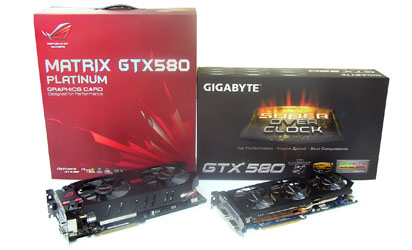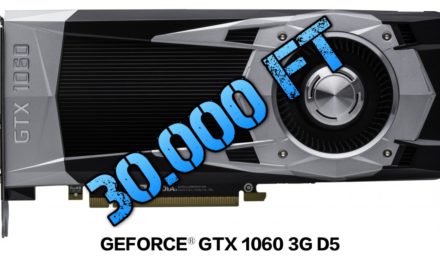
We tried: GIGABYTE GTX 580 SOC vs ASUS GTX 580 Matrix Platinum

GIGABYTE GeForce GTX 580 SuperOverClock

The GIGABYTE GTX 580 SuperOverClock is not a small specimen either. By now, the GIGABYTE SOC series has earned a high reputation and recognition, with selected GPUs and RAM chips (Tier 2 Samsung or Hynix, high frequency certified) based on quality components and a 1 ounce copper PCB. The GTX 580 SOC makes its debut with the Ultra Durable +, which features more than the traditional UDV series with special NEC / TOKIN capacitors named Proadlizer, but these chips can perform very well in extreme conditions.
What’s better is that this excellent hardware environment doesn’t go unused, SOC cards, without exception, come with significant factory tuning, just remember the GTX 560 Ti SOC 1 GHz GPU clock, for example. Hard OC didn’t lag behind either, the 110 MHz base clock signal of the GF772 was upgraded to 855 MHz, increasing the frequency of the CUDA cores from 1544 to 1710 MHz.
Oddly enough, RAMs have suffered the smallest increase in proportion, running at 4008 MHz instead of 4100. We mentioned that the GTX 580 SOC is also huge, with a length of 27 cm. Attached to the GPU with a wide, special copper base (Vapor Chamber), a huge, dense, nickel-plated rib extends virtually across the entire card, interwoven with two thick 8mm nickel-plated heat pipes.
They did not leave this significant surface area unused, not one, not two, but three fans were installed on the system. This is how the Windforce 3X cooling was born, similar to which we have already seen on previous top cards. Compared to ASUS's, this solution takes up only two card slots, so if you're short on space, you can write this off as an advantage. In terms of outputs, we get the usual palette, the two dual-link DVIs are supplemented with the mandatory native HDMI (mini, gold-plated). We can't see much of the blue PCB because of the cooling, but below the rightmost fan we can find a button labeled Xtreme. The GIGABYTE GTX 580 SOC, like most of the company's motherboards, has two BIOSes (dual-BIOS). The first contains the care settings, while the second can be used to "flash" our own parameters. With the help of the button, we can switch between the two BIOSes (in the off state), so the Xtreme switch can also come in handy if we get into trouble with our own settings.
The card has a 12-phase power supply (with 2 additional separate phases for the memories) to which life power flows through a 6-pin and an 8-pin PCI Express power connector. In this respect, it lags behind the ASUS GTX 580 Matrix. In our view, this should not be a major drawback in the case of “average use”. Whether it’s in hard tuning will be told by the pros. It is important to mention that by default all the phases on the card work, so in this respect the consumption is constant.
However, if you install the GIGABYTE OC Guru utility included with the card, you can not only increase the frequency and voltage, but also the software can dynamically control the number of phases in use depending on the load, in other words, if there is no load, it turns off most of the phases . A row of green LEDs can be observed on the back of the PCB, this shows the number of phases in use. The back of the rifle-sized printed circuit board is not covered this time, but we find the same NEC capacitors (proadlizers) on it as on the back of the ASUS Matrix, only not one piece is shown here, but five.



























